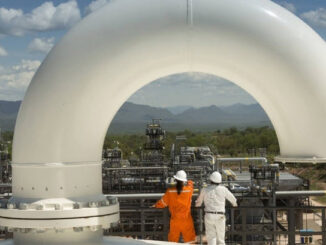
The Top End’s electricity grid faces risks of blackouts within three years because the NT government has been slow to deal with increasing rooftop solar and the scheduled retirement of gas generators, according to a NT Utilities Commission report.
The independent regulator’s 2022 Electricity Outlook Report, released last week, said “action and investment decisions are needed now” from the NT government to avoid “risks to maintaining a secure Darwin-Katherine power system as early as 2026/27”.
The Utilities Commission made similar warnings in its three previous outlook reports.
The 2022 report also said electricity demand may not be met within four years if a solution is not found to the expected retirement of 185 megawatts of generation capacity at Channel Island — 47 per cent of the current capacity in the Darwin-Katherine grid.
“The commission has been warning for several years that delays in meeting the emerging challenges and risks to the territory’s power systems means less time to respond, which may increase risks and costs, and ultimately negatively impact territory electricity consumers and taxpayers,” the report said.
The NT government “has acknowledged the challenge and urgency, and is responding,” according to the report.
“A range of important plans are under development to address the issues, but few of them have so far progressed to the investment stage that enables the commission to include them in the forecasts contained in this report,” the Utilities Commission said.
Decisions were needed “as a priority, noting any solution involving assets such as new generation or storage involves long lead times for sourcing and delivery,” according to the report.
More investment needed: NT opposition
Shadow minister for essential services Josh Burgoyne said the NT government needed to increase investment in the electricity grid to ensure its ongoing stability.
“We want to get to a space where we can get as much solar as possible powering our system,” Mr Burgoyne said.
“But huge investment is needed right now to ensure it can be done in a reliable and a safe manner.
“Right now, that investment isn’t happening, and a lot of that comes down to the fact that Power and Water has a huge debt of $1.2 billion and the NT government has a $9 billion debt.”
Minister for Essential Services Selena Uibo said the NT government had been “working closely with the Utilities Commission on our electricity system planning to ensure our system security”.
“The Darwin-Katherine Electricity System Plan and Territory Generation’s Fleet Transition Plan, when implemented, will ensure system security and will mitigate the issues identified by the commission,” Ms Uibo said.
“The outlook report necessarily assumes only committed electricity projects.
“However, as acknowledged by the commission, the NT government is planning for future generation capacity to replace planned retirement of existing gas-fired generators, as well as near-term investments in the essential services required to enable the safe commissioning of future renewable energy projects.”
The Top End’s electricity networks also face the problem of an underperforming gas field, forcing the electricity provider to buy gas from LNG exporter Inpex.
Renewables target not on track
The NT government has a target to have 50 per cent of electricity produced from renewables by 2030.
However, four large commercial solar farms built in the Top End over the last three years are yet to be supplying electricity to the grid, which an NT government executive last month admitted “was not acceptable”.
The Utilities Commission said “the urgency and lack of policy certainty in the territory is likely to make it more difficult to attract private industry investment in the electricity supply industry without projects being underwritten by the [NT] government”.
Energy consumption in the Darwin-Katherine grid increased by 5.5 per cent in 2021/22, in part due to higher temperatures in the Darwin region.
“2021/22 had the highest number of days in recent history where the maximum daily temperature exceeded 32 degrees, at 275 days,” the report said.



